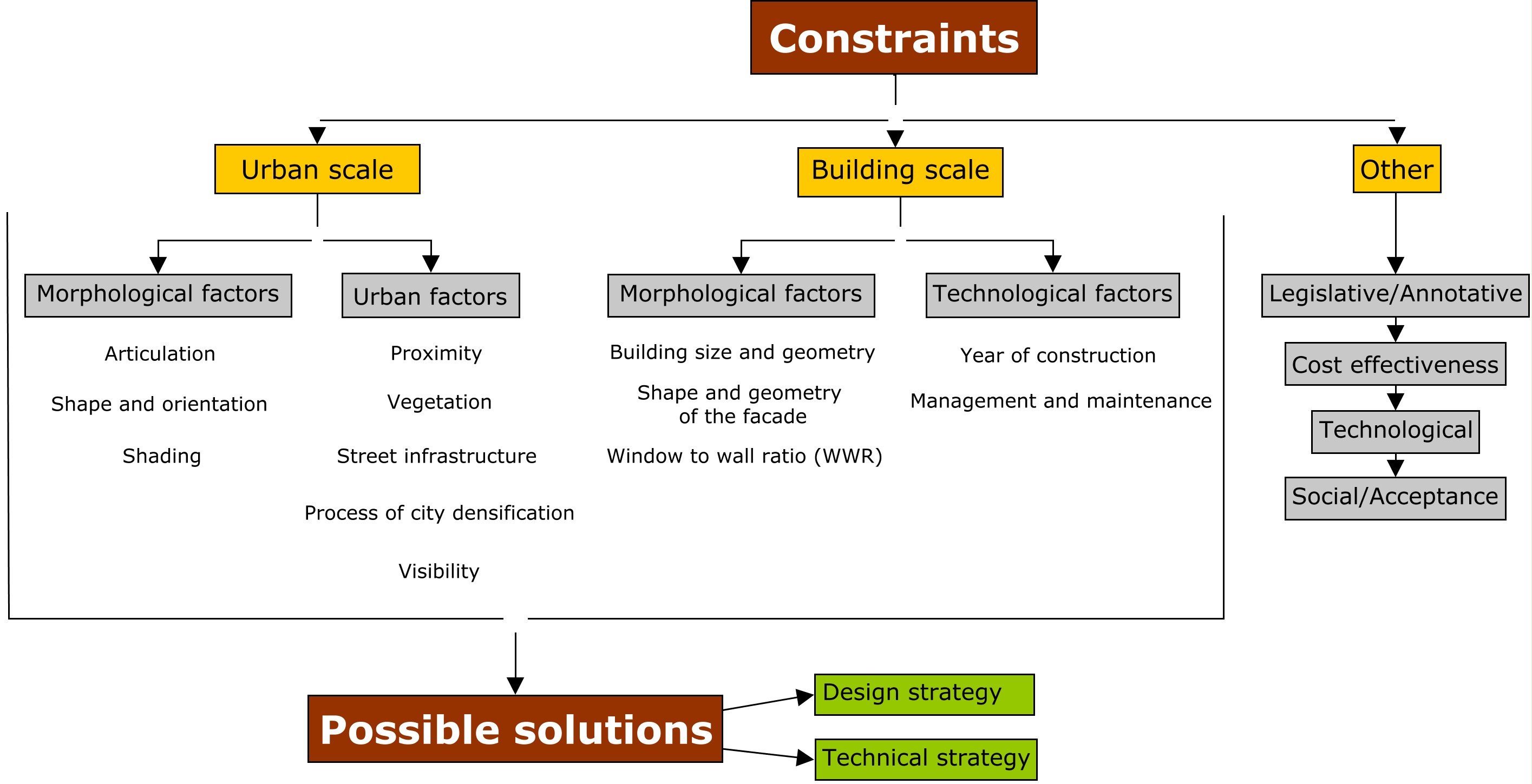How can we integrate BIPV on vertical facades?
A full integration of PV is possible both in ventilated and more standard facades [1]. Whichever the case, solution providers should be contacted in the early phases of the project [cf. sheet 2.4]. Some technical approaches are illustrated here.

Today’s BIPV market can provide a clear catalogue of BIPV technical solutions, namely a structured scheme of elements to activate the building skin [2].
A detailed study of building skin construction technology is essential:
- to analyze the relationship of the PV part with the layerings, the different sub-systems and envelope materials;
- to define the construction interferences to be solved by the technical solution in order to properly satisfy the building’s technological requirements (e.g. watertightness, mechanical stability, etc.) and PV functionality.

The topic of BIPV facades today demonstrates tangible feasibility and design flexibility [3,4]. However, some specific technical requirements (Fig. 1) and the related issues are often perceived as obstacles for the full implementation of BIPV in the existing built environment, namely in two specific contexts: the urban and building levels [5]. The former includes issues related to characteristics of the urban area where the building is located which can affect the BIPV concept and installation. The latter is related to the issues that arise when considering the specific building typology and building envelope for the BIPV installation (Fig. 2).
From project investigation it emerges that several strategies to reduce or eliminate constraints and limitations are possible, by implementing both a design and a technical approach.
- On the one hand, technical solutions such as accurate electrical wiring, the use of appropriate PV technology or technical devices (power optimizers, micro inverters, by-pass diodes, dummies) can moderate or eliminate some energy problems that building and urban situations create on a PV plant (shading, non-optimal exposure, etc.).
- On the other hand, implementing an accurate BIPV design approach during the early stages of architectural concept and building skin construction can help avoid some of the critical aspects affecting PV energy behavior, as can carefully taking into account some basic design rules and optimizing design factors such as PV plant configuration, geometry, exposure, string layout, etc. according to the urban or building context.



